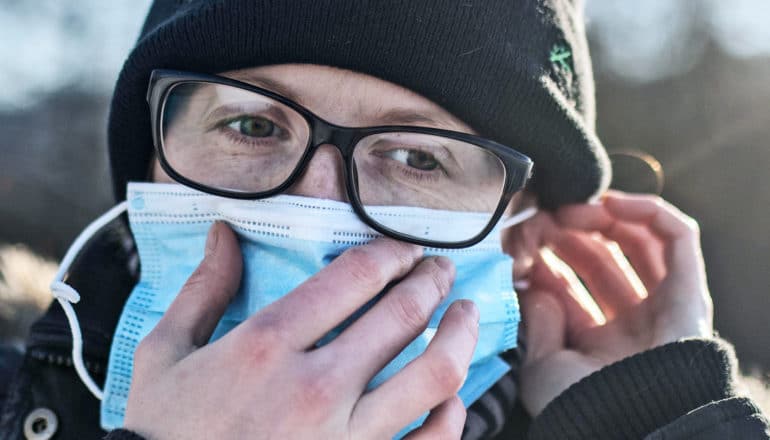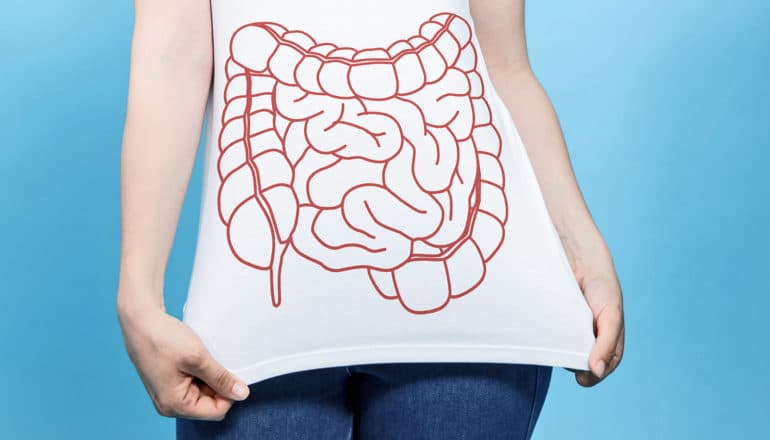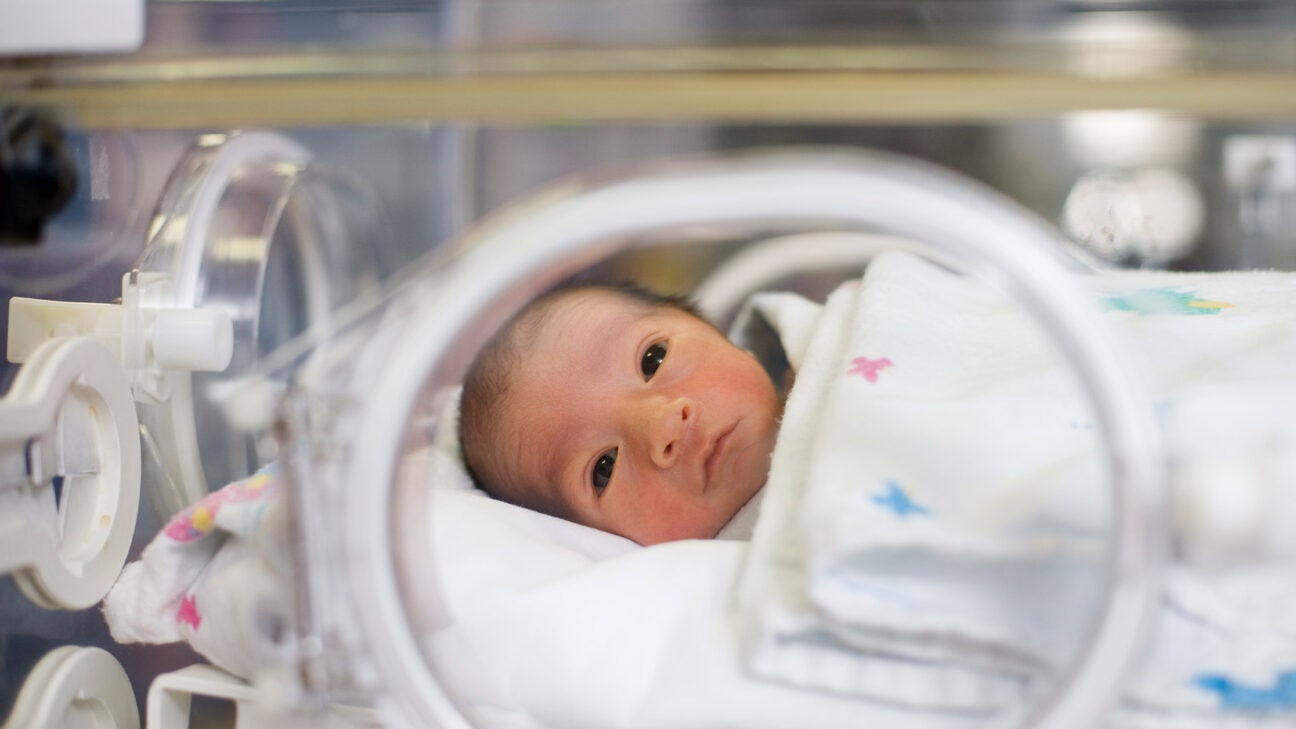
A return to a more normal holiday season may also mean higher stress levels, so an expert offers some coping tips.
* This article was originally published here


Two new studies link declines in outdoor activities and park use during the first year of the COVID-19 pandemic to reductions in mental health measures for teens and young adults from middle school through college.
The studies build evidence for the mental health benefits of nature’s medicine—and the potential hazards of restricting access, researchers say.
“This is an opportunity for anyone concerned about the health and well-being of future generations to focus on the power of parks when it comes to mental health promotion, and to figure out what we can do to make sure all segments of the population have access to enjoy the health-related benefits that parks can provide,” says Lincoln Larson, an associate professor of parks, recreation, and tourism management at North Carolina State University.
Larson is the lead author of a study looking at factors linked to emotional distress in college students. Published in the journal Environmental Research, the study involved a survey of 1,280 college students at four large public universities in the United States, including at NC State.
Researchers wanted to understand why and how students’ outdoor recreation and park use changed in March through May of 2020, and how that related to their mental health. They asked students to rate their use of parks and other outdoor spaces and their levels of emotional distress before and during the pandemic.
They found 54% of students said they reduced their park use during the pandemic, and about two-thirds reduced outdoor activities. College students more worried about COVID-19 were more likely to limit outdoor recreation. Students who identified as Asian or Black were more likely to limit their park use than students of other ethnicities or races.
“It is becoming apparent that historically marginalized populations are having an even harder time enjoying the benefits that come from outdoor recreation during the pandemic,” Larson says.
Emotional distress was “widespread,” researchers report. Reducing park use was one of the factors linked with higher levels of emotional distress, along with knowing someone who had COVID-19, and other factors. Students who lived in counties with larger areas of national or state parks per capita were likely to report lower levels of emotional distress.
“Reducing park use was one of the stronger predictors of emotional distress; people who stopped using parks suffered worse mental health impacts in the early stages of the pandemic,” Larson says. “Other studies have shown that any contact with nature, whether or not it’s in a park, can be beneficial.
“For college students, public parks may be particularly important. If parks are available where students live, especially if students are visiting these parks, then they are likely to experience more positive mental health outcomes.”
In a second study published in the journal Sustainability, another team of researchers found that as young people’s outdoor activity participation decreased during the pandemic, their connection to nature decreased as well.
“Connection to nature” is a measure of a person’s comfort and enjoyment of time in nature. They also saw that this plays a role in their mental well-being.
Researchers surveyed 624 youth aged 10 to 18 years from across the United States between April and June of 2020. They asked them how often they participated in outdoor activities like bicycling outside, playing sports, or going for walks or runs, and how often they participated in nature-based outdoor activities like hiking, hunting, and fishing. They also asked youth about their connection to nature, and about their mental well-being.
They found that 55% of young people reported they reduced their nature-based activities during the pandemic, and 64% reported reducing their outdoor activities. Thirty-four percent of teens reported a decline in their connection to nature—which is how much they like or feel comfortable being in nature. Fifty-two percent reported declines in their mental well-being. Teens who lived in rural areas, as well as older adolescents, had higher connection-to-nature scores.
When researchers analyzed factors related to teens’ well-being, they found that strength of their connection to nature was tied to how much of a mental health boost they got from outdoor activities both before and during the pandemic.
“This study highlights the importance of getting outside for adolescents,” says first author S. Brent Jackson, a former graduate student at NC State. “If you get them outside, they can develop that connection to nature, and that could help buffer them from declines in mental health.”
They also found the strength of their connection to nature played a lesser role in their mental well-being during the pandemic, when kids were getting outdoors less overall, and engaging less in outdoor and nature-based activities.
“The advocates of putting kids in nature are saying there’s a lot of research that shows that if you put kids in nature, they’re happier, and they have better mental well-being, but if you’re thinking about this during the pandemic, we find that this treatment is more like a vaccine than a pill,” says study coauthor Nils Peterson, a professor in the NC State Fisheries, Wildlife and Conservation Biology program.
“If you’ve prepared students, and they’re comfortable in nature, then it works in helping them maintain their well-being.”
The studies are part of a growing body of evidence outlining the role of outdoor activities in the mental health of kids and young adults, researchers say. “The good news is that parks promote mental health, but the bad news is, there are a whole lot of people who stopped or reduced their park use during the pandemic,” Larson says.
“In the wake of COVID-19, how can we communicate the benefits of parks to make sure everyone has the opportunity to enjoy outdoor spaces that fuel active, healthier lifestyles?”
Source: NC State
The post Missing nature during COVID took a mental toll on young adults’ appeared first on Futurity.


The US appears to be on the brink of a winter surge in COVID-19 cases, but experts from Johns Hopkins University offer hope that this winter will be better than the last.
COVID-19 cases are on the rise again in the United States after dipping just three weeks ago. Vaccine effectiveness is waning and without widespread boosters, shots given six months ago remain at least 80-85% effective against serious illness but will only prevent two out of three possible infections for those vaccinated early in the pandemic—all signs pointing to the very real possibility of a winter surge here in the US.
Yet, there is reason for hope that this winter will be better overall than last winter, even if cases continue to rise, thanks to vaccines and new oral antiviral medications that will reduce cases of severe COVID, preventing hospitalization and death, says David Dowdy, an associate professor of epidemiology at the Johns Hopkins Bloomberg School of Public Health and a physician with Baltimore Medical Services.
“It’s worth remembering where we were at this time last year: Many schools were not in-person, many businesses were operating at partial capacity, and many gatherings had strict size limits, yet COVID-19 cases were rising more than twice as fast as they are today,” Dowdy says.
“Now we have extremely safe vaccines with long-lasting effectiveness against serious disease, oral antivirals that could soon make COVID-19 a highly treatable disease, and we’re living our lives much more like in pre-pandemic times. The COVID death rate in the US is still falling and is now only half of what it was two months ago.”
So how do we make sure Dowdy’s optimism gains traction?
Here, Dowdy and Rupali Limaye, a social and behavioral scientist and health communication scholar at the School of Public Health who studies vaccine behavior and decision-making, offer a roadmap, with a caveat that “no one can fully predict the future of this pandemic,” Dowdy says.
If this winter is better than the last, it will be thanks in large part to vaccines. The new antivirals are great, but they aren’t a preventative measure like the safe, effective vaccines, Dowdy says.
“While we still are susceptible to getting cases of COVID-19, I think that the amount of serious illness and death is going to be much less, especially because of all the efforts that people have put into to getting vaccinated and getting their families and communities vaccinated as well,” he says. “So even if cases go up this winter, we’re very unlikely to see a return to the overcrowded ICUs and makeshift morgues of a year ago.”
The continued push to vaccinate against COVID-19 includes ensuring newly eligible children get vaccinated as soon as possible, with research indicating that vaccinating 5- to 11-year-olds may prevent 600,000 infections over the next four months alone, Limaye says.
“The COVID-19 vaccine is recommended for children even if they’ve had COVID-19 infection. And that’s simply because the vaccine can better provide longer-lasting protection than natural infection.”
Kids can even get a COVID-19 vaccine dose near or at the same time as other childhood vaccines, like HPV or a flu shot. The benefits of vaccination in children outweigh the risks, especially when we don’t yet know how the long-term effects of COVID-19 infections will affect brain development, Limaye says.
And the benefits of the COVID-19 vaccine extend beyond any individual child: “Vaccinating our children, specifically in that age range, can have immense benefits to reduce infection of others who may be at more risk,” Limaye says. “This includes grandparents that you may see at Thanksgiving, for example, teachers, and other family members as well.”
With so much riding on COVID-19 vaccines, convincing people in our lives to get a shot is of paramount importance when we still have a little over 40% of the eligible population—excluding 5- to 11- year-olds—who have not yet gotten the vaccine, Limaye says.
“I think what we are starting to see now is that if you have not gotten the vaccine, there’s essentially two reasons why you will get the vaccine. One is that you will see either a close friend or a family member who ends up getting severe COVID and ends up in the hospital or passing. That has been a nudge that has forced people to think about the vaccine decision,” Limaye says.
“The second is [vaccine] mandates. That is one thing that we know will change vaccine behavior. As we’re starting to see different employers think about mandates, that is changing vaccine coverage in specific populations.”
Unvaccinated people account for the majority of new COVID-19 infections, for severe cases, and for spikes in states like Alabama, Louisiana, Mississippi, and Texas. “With regards to specific socio-demographics where we’re seeing hesitancy, it tends to be individuals that tend to be white and that might live in more rural areas,” Limaye says, adding that vaccine disparities have narrowed in the last year among the Hispanic and African-American communities.
“I think the goal here is going to be to continue to be empathetic, to be compassionate, and to continue to have one-on-one conversations with these individuals because it’s important to not be dismissive of people’s concerns,” Limaye says. “That’s the only way that we’re going to be able to nudge those individuals into vaccine acceptance.”
It’s human nature to want to know exactly when the COVID-19 pandemic will be over, but Limaye and Dowdy say it’s not that simple. In reality, it’s time to shift our thinking from the endgame toward how we’ll live our lives alongside COVID-19 going forward.
“Everyone wants there to be a day that we declare, ‘This pandemic is over,'” Dowdy says. “But nobody asks, ‘When is the end of the flu?’ for example. This is a disease that’s going to be with us for the foreseeable future. It’s going to come and go.” That could mean we get COVID-19 booster shots annually or in tandem with occasional spikes in community transmission, Limaye says.
Limaye agrees that we should think about COVID-19 as we do with any other pathogen like a cold or a flu. “COVID is here to stay,” Limaye says. “What we really need to be messaging around is that people can still get COVID, there can still be breakthrough infections, but the great news is if you have been vaccinated, you are very much less likely to be hospitalized or have severe COVID compared to those that are unvaccinated.”
“The question is, when can we get this to a point where it’s tolerable to us as a society,” Dowdy says. “And I think that we may be closer to that point than we imagine. If we already look at how we’re living our lives today as opposed to how we were living our lives a year ago, we’ve made great strides. So, we’re not at the pandemic end date and we never will be, but we are making real progress. And I think there’s a lot of reason for optimism going forward.”
Source: Johns Hopkins University
The post What can you expect from another COVID winter? appeared first on Futurity.

About 50 million adults in the United States live with chronic pain.
Help, however, may be on the way.
The Food and Drug Administration (FDA) has approved a breakthrough device that could improve the daily lives of people with chronic pain.
The EaseVRx is a virtual reality (VR) headset that uses techniques like cognitive behavioral therapy to help with pain reduction in adults.
“The inspiration behind the EaseVRx was to create a standardized, standalone, high quality behavioral intervention where people could acquire a critical skills set that has been shown through various different types of treatment modalities to both reduce pain and its impacts. But now they can receive it on demand in the comfort of their own home and in doing so, transcending so many barriers to effective pain care,” said Beth Darnall, PhD, the director of the Stanford Pain Relief Innovations Lab in California as well as the chief science adviser and co-creator of the EaseVRx.
“Individuals turn on the headset and they’re in an immersive 3D world where they can see a new environment around them and be directed to interact within the context of that environment to learn various information such as the role of pain in the brain, how pain exists in the central nervous system, and what can be done to soothe or calm one’s nervous system within the context of pain,” Darnall told Healthline.
The VR device takes users through a treatment program of 56 sessions done daily over an 8-week period.
The FDA reported that in a clinical study of the device, 66 percent of those who used EaseVRx reported a higher than 30 percent reduction in their pain, compared with 41 percent of other participants who didn’t use the device.
About 46 percent of those who used the device reported a greater than 50 percent reduction in their pain.
“It’s really exciting. It is a breakthrough device, it’s also a breakthrough in terms of how we’re conceptualizing pain and pain treatment,” Darnall said.
“It’s not to say it will obviate the need for medication or other interventions, but it can nicely work alongside any other medical treatment that a physician or clinician will determine to be appropriate for any patient,” she added.
Lora L. Black, PhD, MPH, a licensed psychologist and assistant professor of psychiatry and behavioral sciences at the University of Kansas Health System, said the device could be useful in improving access to treatments.
“This appears to be a good use of technology to enhance self-regulatory techniques that have been shown to be helpful for chronic pain in multiple studies,” she told Healthline.
“There is also research showing that VR technology can increase adherence to other treatments, such as exercise, so use of similar technology may be useful in increasing adherence to the self-regulatory techniques as well,” she added.
“A device like this may help to reduce access barriers many patients experience when trying to find psychologists trained in pain-focused psychotherapy,” Black noted. “Such a device may also serve as a helpful supplement to those already engaged in psychological treatment for chronic pain.”
Cognitive behavioral therapy (CBT) is a psychological treatment that can be used in a variety of conditions to improve daily function and quality of life.
CBT works by helping you change patterns of thinking and develop effective ways to cope.
It can be used in the treatment of pain to change how people feel and experience pain.
“The medical definition of pain is that it’s both a physical and an emotional response, so the brain responsibility in that is on both sides. The brain processes the physical aspects of pain and brings them to our attention, and it’s also the center for the emotional aspects of pain. CBT is a method of using the brain’s ability to influence those things to change the pain experience,” Dr. Matthew Smuck, chief of physical medicine & rehabilitation at Stanford Health Care, told Healthline.
Dr. Gene Tekmyster, a physical medicine and rehabilitation physician at Keck Medicine of USC, said that pain can change the way people think.
“Pain is multifactorial. There is an incredibly large psychological component. There are so many things involved in people feeling pain and how much they feel pain,” Tekmyster told Healthline.
“Because pain changes your psychology, your stress levels, and actually changes your behaviors, not only do you have to change how people perceive the pain but also how it affects them and how they perceive it affects them,” he said.
“It’s how we deal with pain that CBT helps to control, not really controlling pain in and of itself,” he added.
Darnall said the VR device is one more addition to the treatment options available to treat chronic pain. Other options include physical therapy, exercise, yoga, and acupuncture.
Medications may also be used, but Smuck said they’re often not useful for the long-term management of chronic pain.
“Studies have shown they can be useful most often in the short term, but very few studies show that medications are useful for managing chronic pain in the long term and that’s particularly true for medications that have more risk, like opioids,” he said.
“The amount of benefit that is derived from opioids is small. It’s really not any better than what you can get from CBT. Those benefits tend to be short lived because of the way the body responds to opioids. There’s a substantial amount of risk to taking opioids, including addiction, overdose, and death,” he added.
Darnall is hopeful the VR device will make lower risk treatment options such as CBT more easily accessible to the public.
“Some people of course definitely need pain medication and we never want there to be barriers to a particular treatment that a person may need,” she said. “However, it is well appreciated and has been stated for chronic low back pain but also chronic pain generally, we want to apply lowest risk treatments first.”
“In this case, we are giving people that option, access to home-based, on-demand pain care,” she said.



Researchers are working toward genetically engineered bacteria that monitor chemical production from inside a person’s gut and fix any imbalances.
Some of the trillions of bacteria living in your gut—among viruses, eukaryotes, and archaea—synthesize some of the neurotransmitters that are responsible for your nerves, anxiety, and euphoria.
When you don’t have enough—or you have too much—of any of these hormones, your mental health can suffer.
Tae Seok Moon, associate professor in the department of energy, environmental, and chemical engineering at the McKelvey School of Engineering at Washington University in St. Louis, says he’s experienced this imbalance himself. And he’s working on a fix.
His latest work appears in the journal Cell Systems.
“It is a difficult job to do,” Moon says, “to keep your neurotransmitters balanced.” But he has already begun. In 2017, Moon received a grant to engineer a probiotic specifically aimed at protecting people from the negative health effects of adrenaline surges.
Moon’s method involves the development of a “bacterial sensor” that can detect certain chemicals in a person’s gut. He has been working on similar sensors in his lab with the goal of ultimately genetically engineering a type of modular system with different sensors. He had already developed sensors for temperature, pH, oxygen levels, light, pollutants, and other disease-related chemicals.
Moon isn’t the first person to develop such sensors, but until now, they have mostly suffered from lack of specificity. Sensors can have difficulty when it comes to differentiating between similarly structured molecules.
“Specificity in engineering is one of the big challenges,” Moon says. “But we have proved that this can be done.”
The proof is in the genetically engineered Escherichia coli Nissle 1917 (EcN) bacterium, which has a sensor for one—and only one—type of molecule.
The team was able to start with a sensor pathway found naturally in bacteria. First author Austin Rottinghaus, a PhD student in Moon’s lab, and other lab members used computer modeling to explore how mutations would affect the pathway’s sensitivity. The researchers were able to develop a sensor pathway that was sensitive to the molecules they were interested in—and only those molecules.
The sensors were incorporated into EcN, turning the bacteria into precision hunters. They could discriminate between phenylalanine (Phe) and tyrosine (Tyr), two structurally similar molecules associated with the disorders (PKU) and type 2 tyrosinemia, respectively.
The team also developed sensors for the similarly structured phenylethylamine (PEA) and tyramine (Tyra)—both found in food and in the gut.
With this proof of concept, Moon’s lab can now work on developing an actuator—a protein that will act based on information gathered by the sensor. For instance, PKU is a genetic disease which causes babies to accumulate too much phenylalanine. A completely engineered bacteria might have a sensor to detect the amino acid and an actuator that can degrade it if the levels of phenylalanine are too high.
These kinds of engineered organisms can be useful beyond a medical setting. They also can be used to monitor food quality or to regulate pathways for microbial metabolic engineering, the processes used to create many pharmaceuticals, fuels, or other chemicals.
Because of his experiences, however, Moon is personally most interested in bacteria that can sense the levels of neurotransmitters in the gut. “If the levels are too high, the bacteria produce an enzyme that degrades the target chemical. If it’s too low,” he says, “the bacteria produce an enzyme that can synthesize more of it.”
About 95% of the hormone serotonin is synthesized by bacteria in the gut. When this and other neurotransmitters are out of whack, a person can suffer greatly, Moon says. He wants to put an end to this suffering. “This is the beginning of our engineering solution.”
This work had support from the National Institutes of Health, the Office of Naval Research, the United States Department of Agriculture, the National Science Foundation, and the National Science Foundation Graduate Research Fellowship Program.
Source: Washington University in St. Louis
The post Could engineered gut bacteria guard our mood? appeared first on Futurity.


Forcing a picky eater doesn’t help, survey results indicate.
In a large national survey, adults who struggled with picky eating habits as children overwhelmingly said they benefitted more from positive and encouraging strategies their parents used than forceful or coercive approaches.
The research involved people from a generation that struggled with food avoidance before it was identified in 2013 as a psychiatric condition called Avoidant/Restrictive Food Intake Disorder (ARFID).
The researchers say their findings, appearing in the International Journal of Eating Disorders, provide guidance for both families and behavioral health professionals for developing best practices to deal with extreme food aversions.
When picky eating is severe, it is diagnosed as ARFID. The condition is characterized by health problems such as weight loss and nutritional deficiencies and it can also lead to social and emotional problems when mealtimes become a source of shame, friction, and/or conflict.
“It’s not surprising that positive approaches were favored, but it is surprising how overwhelming that position was among this group of adults,” says Nancy Zucker, professor in the Duke University’s department of psychiatry and behavioral sciences. Zucker is co-senior author of the study with Guillermo Sapiro, professor of electrical and computer engineering at Duke’s Pratt School of Engineering.
Zucker, director of the Duke Center for Eating Disorders, says the broad consensus is validation for the current treatment approach that emphasizes positive interactions: “It is robust confirmation for what had been out there in the literature and reinforces the concept that children feeling forced or pressured to eat is not helpful.”
The study launched more than a decade ago as severe food avoidance was gaining attention and research into the disorder was limited. The online survey was aimed at adults who self-identified as current picky eaters to help understand their perceptions and experiences.
More than 19,200 people were included in the survey; 75% were female and 25% were male, and 89% were white. Respondents were asked to describe the food presentation strategies their parents or caregivers used that they found to be helpful or not helpful in increasing food variety.
Survey participants were subsequently classified as either likely having an ARFID diagnosis or not, based on their degree of impairment from food avoidance. Those who reported that eating problems led to significant weight loss, nutritional deficiency, interference with job functioning, and/or interference with social relationships were categorized as likely having ARFID.
Interpreting the narrative responses from the huge cohort of participants created a logistical challenge, which the researchers solved with artificial intelligence tools.
Using a computational tool to characterize the perceived helpfulness of parent feeding strategies, the researchers applied an algorithm to interpret the meaning and/or sentiment of survey responses to characterize them as helpful or not helpful.
“From a technical perspective, this study used an AI application that understands language, not just words and sentences, but concepts of paragraphs, which was imperative here,” says J. Matías Di Martino, co-lead author with doctoral student Young Kyung Kim. Both are in Duke’s department of electrical and computer engineering. “By getting the positive and negative emotions, it enables us to analyze the comprehensive memories of nearly 20,000 people.”
The researchers found that 39% of the themes regarding helpful strategies mention a positive emotional context, such as using food to teach cultural or nutritional lessons, being flexible about the approach to food, providing plenty of “safe” foods, helping with food preparation, or presenting foods from specific food groups.
Forty percent of the helpful comments noted the importance of structure around eating. Clearly defined expectations around eating were deemed to be helpful in the context of distinguishing between feeling “forced” vs. being asked to do something.
While positive and encouraging strategies were perceived as helpful in improving attitudes towards food and minimizing social discomfort around eating, many adults still struggled with a degree of avoidance/restriction. The researchers note that parents are perceived as having a positive impact despite their children’s food avoidance persisting into adulthood.
The researchers say survey participants clearly found some foods aversive, not merely unpleasant. This likely intensified their feeling of being trapped and made to do something disgusting if they were asked to eat that food.
“To our knowledge, there is no published research that identifies effective feeding strategies for those with ARFID,” Zucker says. “Figuring out the best way to feed a child with severe food avoidance can be exhausting and stressful for parents, so providing guidance is essential to improve the social and emotional eating environment for their children and reduce the distress that both parents and children have at mealtimes.”
The study received support from the National Institutes of Health.
Source: Duke University
The post Don’t pressure a picky eater, ARFID survey shows appeared first on Futurity.


As the holiday travel season approaches, you might be planning to visit relatives in a different state for that Thanksgiving Day meal or holiday season reunion. What should you do if you’re concerned about COVID-19 exposure in that area?
Experts say you should assess your risks and own sense of safety around protection from the virus before booking a trip.
You’ll want to determine state transmission rates, consider your level of comfort with the type of gatherings you might be attending, and also navigate the tricky waters of visiting relatives who might not share your views about COVID-19 safety.
You have to do your research to determine how safe a given state may feel to you as a holiday season travel destination, said Dr. George Rutherford, professor of epidemiology, preventive medicine, pediatrics and history, as well as the acting executive director of the Institute for Global Health Sciences at the University of California, San Francisco (UCSF).
“Are there raging epidemics in that area? What proportion of the population is vaccinated? It totally ends up being about what are you going to do there. If you go to see your 95-year-old parents who are living in a place where there is a ton of transmission, well, that might be one consideration. It might be something to give you some pause,” Rutherford explained.
“If you go to see your kids, and everybody is totally vaccinated, then that creates another dynamic. Of course, small children who can’t be vaccinated adds another dynamic,” he added.
“It’s dependent on who is going, who you are going to see, and where are you going. Those are the three variables I would be most interested in,” he said.
Alex Butler, senior editor at Lonely Planet, told Healthline that it’s essential to know the COVID-19 regulations in your given destination and get a sense of “local attitudes toward them.”
“While masks or social distancing may not be required by law, you may still want to research restaurants or cultural sites in that area that still require them and stick to visiting those establishments,” Butler said.
She pointed to resources provided by the Centers for Disease Control and Prevention (CDC) that detail levels of community transmission by county and state. This way, “you can see at a glance how COVID-19 is spreading in your destination,” Butler explained.
“It’s also good to check the local vaccination rate and the situation in nearby hospitals. If hospitals are already experiencing capacity issues due to COVID-19, that could impact your ability to receive care for any health issue that could arise along the way,” she added.
According to the CDC state tracker, no continental state has a “low level” of community transmission. At the time of publication, no state is even at a “moderate” level.
Level of community transmission is defined as “the number of cases in the last 7 days per 100,000 population and the number of tests in the last 7 days that have a positive result,” according to the CDC website.
Rutherford said transmission rates remain high in many areas of the United States. In states where transmission rates currently may be lower, they may also have lower vaccination rates.
If you are generally concerned about COVID-19, have an underlying condition, aren’t fully vaccinated, or are worried about visiting someone in a high-risk group, weigh travel plans carefully, he said.
When asked what to consider if traveling to a state with high COVID-19 transmission and low vaccination rates, Butler said it’s important to keep in mind that, right now, “all U.S. states are currently experiencing high or substantial levels of community transmission.”
“That means you should be cautious no matter where in the country you’re traveling. If you want to get away this holiday season, get vaccinated — if you aren’t already — and always take the necessary health precautions to protect yourself and others,” she said.
Also, she reiterated that you should be mindful of the local rules and attitudes toward masking and social distancing and follow “whatever precautions you need to feel safe — even if they aren’t required by law.”
If this still doesn’t assuage your fears, Butler said that now might be the time “to plan a holiday where you can be outside and explore the outdoors” if a trip to a state that would involve indoor gatherings with high COVID-19 rates and low vaccination adherence gives you pause.
One delicate matter that might come up this holiday season is traveling to a family reunion where not everyone practices the level of adherence to COVID-19 safety protocols that you do.
If you’re going somewhere that doesn’t feel safe to you, Rutherford was blunt: “Don’t go.”
Suppose you’re thinking of attending a large family gathering with unvaccinated relatives, and you have an underlying condition that puts you at risk of either more rapid progression to illness or of not being protected by the vaccine. In that case, you may want to reconsider, Rutherford added.
“You will need to be careful. It remains to be seen whether we have another winter surge or not, but these are all things to keep in mind,” Rutherford said.
Essentially, it comes down to individual choice and a sense of safety.
Butler and Rutherford stressed that you have to research what states might be safer to travel to at this time, where transmission rates may be lower than other places, where vaccine adherence is up, and pinpoint your safety threshold.
You can enjoy traveling to other states this holiday season, but you’ll have to do your homework to determine what trip might be the best to take at this time.


Researchers continue to find evidence that the brain’ immune system may not be the culprit behind fetal alcohol spectrum disorders.
It has long been thought that cells in the brain’s immune system called microglia are responsible for the neurological damage that occurs when this type of exposure happens.
“We looked for more subtle changes in microglia function this time,” says Ania Majewska, professor of neuroscience at the Del Monte Institute for Neuroscience at the University of Rochester and lead author of the study in Developmental Neurobiology.
“We were not able to detect a difference in function leading us to believe that the defect may exist in other cell types. However, given the heterogeneity and complexity of microglial function, we are also exploring how different populations of microglia in different parts of the brain respond to alcohol.”
One out of every 100 babies born in the US is diagnosed with fetal alcohol spectrum disorders (FASD), which occur when a child is exposed to alcohol in the womb. FASD can cause lifelong physical and cognitive impairments, such as poor impulse control and attention, learning disabilities, compromised fine motor skills, and delays in the ability of the brain to process visual and auditory information. There is no available treatment for FASD.
Majewska’s research initially poked holes in the idea that FASD is driven by damage caused in the brain by impaired microglia when her lab found no difference in brain activity in the area among mice exposed to alcohol early in development when compared to those who were not exposed.
In this recent work, researchers exposed mice to alcohol early in development and looked beyond the baseline of microglial movement. Using advanced imaging technology called two-photon microscopy the scientists observed how the microglia interacted with neuronal dendrites—part of the connection between neurons that enables neighboring nerves cells to communicate. They found no difference in this connection when comparing brains exposed to alcohol to brains that were not.
“The brain is made up of many neuronal types so it is possible other microglia-neuron interactions are changing, but it is not a general phenomenon,” Majewska says. “But just because these are immune cells doesn’t mean that they will be involved in every disorder or developmental perturbation. Narrowing down their exact roles is important in terms of targeting these cells for therapies for neurodevelopmental disorders.”
The National Institute on Alcohol Abuse and Alcoholism funded the work.
Source: University of Rochester
The post Brain’s immune system may not be to blame for FASD appeared first on Futurity.

Administrating an epidural is one of the earliest actions you can take to prevent pain during labor.
Epidurals are a medication injected into the epidural space around the spinal cord. The purpose is to stop the feeling of pain in that part of the body, and is often associated with pain relief during childbirth.
Epidurals have become commonplace and help many people be able to give birth with less pain.
There are some clear side effects or risks, including fever, headache, low blood pressure, and lower fetal heart rate. In rare cases, injury to the spinal cord or nerves and breathing issues may occur.
But the research on the long-term effects of epidurals on children themselves has been limited. People have been concerned about getting an epidural in case it could affect their child later on.
But now a new study published last week emphasizes that the use of an epidural during labor is not associated with neurodevelopmental issues for children later in life.
Epidurals are the standard for mitigating pain during labor. In 2015, almost 75 percent of U.S. women used epidurals during labor. Their use is approved by the World Health Organization.
Epidurals can be requested by the birthing parent or their healthcare team.
“The medications for an epidural are directly placed into the epidural space in the mom’s back around the spinal cord. They basically block pain fibers to make moms more comfortable,” said Dr. Mary Jane Minkin, an OB-GYN and clinical professor of obstetrics, gynecology, and reproductive sciences at Yale University School of Medicine.
The study, published in JAMA Network Open, included a total of 435,281 live births from Jan. 1, 2007, to Dec. 31, 2016, with the use of a labor epidural in Scotland.
Among these births, 94,323 had labor epidurals administered, and 340,958 did not.
The babies represented a range of ethnicities. Researchers looked at key info from when the children were toddlers and found there were no associated findings of neurodevelopmental issues.
Getting an epidural was associated with a reduction in spontaneous vaginal deliveries, an increased risk of neonatal resuscitation, and an increased risk of the infant being admitted to the neonatal unit.
But researchers did not see significant developmental issues 2 years after the children were born.
“Children of mothers who received an epidural were less likely to be identified as raising concerns about communication, fine motor function,” or have abnormal development according to certain analyses, the study authors wrote.
“This nicely confirms that epidurals really have no significant adverse effects on babies,” Minkin said.
“They do not give any significant systemic absorption into the mother’s bloodstream. The major potential side effect is to lower the mother’s blood pressure transiently, and we monitor that quite carefully, and treat the mother with fluids and medications if the blood pressure falls,” she added.
Minkin said this research can help expectant parents make important decisions about their birth plan with more confidence.
“The major effect is that moms relax, and that can also help the uterine contractions help to dilate the cervix,” Minkin said. “I have delivered thousands of babies for moms who had epidurals, and they have done quite well.”
In an associated commentary from Dr. Alexander J. Butwick, MS, professor of anesthesiology and perioperative and pain medicine at Stanford University School of Medicine, Butwick says the study adds to a large body of research that epidurals are safe.
“These findings add further evidence to suggest that epidural pain relief does not influence the risk of adverse neurodevelopmental outcomes in offspring,” Butwick wrote.
Butwick also pointed out there were limitations to that study, including the fact that it was not clear the level of neonatal care available at the hospitals where the births occurred.
Butwick wrote more should be done to research the effects of epidurals.
The study adds further evidence to the argument that epidurals are safe for both the birthing parent and the baby during labor.
Of course, every person must do what is right for their own body and baby when giving birth. This study does suggest, however, that concerns over neurological development after the use of an epidural may be alleviated.
“I had epidurals for both of my pregnancies, and the kids turned out fine,” Minkin added.
“I think this paper gives extra reassurance to mothers who might be hesitant about taking an epidural in labor,” she said.

Living in a neighborhood with higher availability of fast-food outlets across all regions of the United States is associated with higher subsequent risk of developing type 2 diabetes, a new study shows.
Increasing number of studies suggest a link between a neighborhood’s built environment and the likelihood that its residents will develop chronic diseases such as heart disease, type 2 diabetes, and certain types of cancers.
The findings of the new study in JAMA Network Open also indicate that the availability of more supermarkets could be protective against developing type 2 diabetes, particularly in suburban and rural neighborhoods.
The study—notable for its large geographic breadth—uses data from a cohort of more than 4 million veterans living in 98% of US census tracts across the country. It counted fast-food restaurants and supermarkets relative to other food outlets, and is the first, according to the researchers, to examine this relationship in four distinct types of neighborhoods (high-density urban, low-density urban, suburban, and rural) at the hyperlocal level nationwide.
“Most studies that examine the built food environment and its relationship to chronic diseases have been much smaller or conducted in localized areas,” says lead author Rania Kanchi, a researcher in the Department of Population Health at New York University Langone.
“Our study design is national in scope and allowed us to identify the types of communities that people are living in, characterize their food environment, and observe what happens to them over time. The size of our cohort allows for geographic generalizability in a way that other studies do not.”
The research team used data from the US Veterans Health Administration (the largest single-payer healthcare system in the country) that captures more than 9 million veterans seen at more than 1,200 health facilities around the country.
Using this data, the researchers then constructed a national cohort of more than 4 million veterans without diabetes from the VA electronic health records (EHR) between 2008 and 2016. Each veteran’s health status was followed through 2018 or until the individual either developed diabetes, died, or had no appointments for more than two years.
Within each of four distinct neighborhood types, the proportion of restaurants that were fast food and the proportion of food outlets that were supermarkets were tabulated within a one-mile walk in high-density urban neighborhoods, a two-mile drive in low-density urban neighborhoods, a six-mile drive in suburban communities, and a 10-mile drive in rural communities.
Researchers followed veterans for a median of five and a half years. During that time, 13.2% of the cohort were newly diagnosed with type 2 diabetes. Males developed type 2 diabetes more frequently than females (13.6% versus 8.2%).
Non-Hispanic Black adults had the highest incidence (16.9%), compared to non-Hispanic Whites (12.9%), non-White Asian and Hispanics (12.8%), Native Hawaiian and Pacific Islanders (15%), and Native American and Alaskan Indians (14.2%). When stratifying by community types, 14.3% of veterans living in high-density urban communities developed type 2 diabetes, while the lowest incidence was among those living in suburban and small town communities (12.6%).
Overall, the team concludes that the effect of the food environment on type 2 diabetes incidence varied by how urban the community was, but did not vary further by region of the country.
“The more we learn about the relationship between the food environment and chronic diseases like type 2 diabetes, the more policymakers can act by improving the mix of healthy food options sold in restaurants and food outlets, or by creating better zoning laws that promote optimal food options for residents,” says senior author Lorna E. Thorpe, a professor in the population health department.
One limitation of the study, according to the authors, is that the study may not be fully generalizable to non-veteran populations, as US veterans tend to be predominantly male and have substantially greater health burdens and financial instability than the civilian population. They are also at greater risk of disability, obesity, and other chronic conditions.
The next phase of the research, say Thorpe and Kanchi, will be to better understand the impacts of the built environment on diabetes risk by subgroups. They plan to examine whether or not the relationships between fast-food restaurants, supermarkets, and community types vary by gender, race and ethnicity, and socioeconomic status.
Additional coauthors are from the Centers for Disease Control and Prevention, George Mason University, and NYU. The US Centers for Disease Control and Prevention and the National Institutes of Health supported the work.
Source: Sasha Walek for NYU
The post Does more fast food in the neighborhood up diabetes risk? appeared first on Futurity.